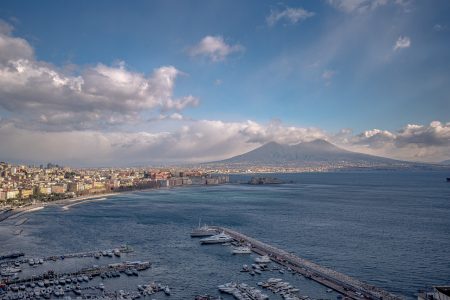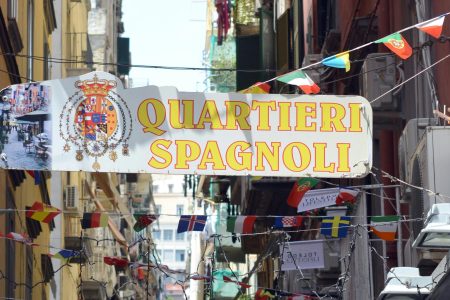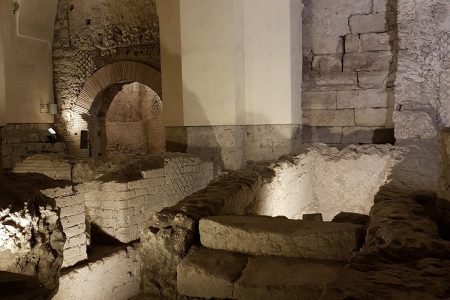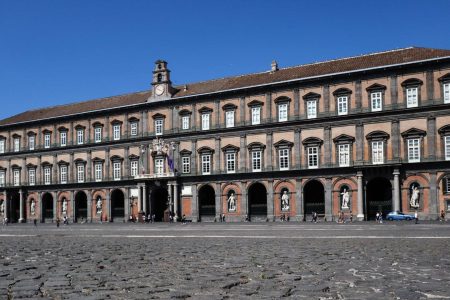Table of Contents
Myths and legends have always enveloped Naples, giving it an aura of mystery and esotericism. Indeed, its historical and cultural heritage is rich in stories of ghosts, benevolent and evil spirits and ancient tales that are lost in time.
The very founding of the city is based on a famous legend, that of the Partenope mermaid and it is no coincidence that today the adjective "Neapolitans" is used to refer to Neapolitans. Between ghosts, witches and sprites, there are many tales today that are passed down orally from generation to generation, and there are those who like Benedetto Croce dedicated his work "Neapolitan History and Legends" to this theme.
The legend of the siren Partenope
The most well-known myth in Naples concerns the birth of the city and features the siren Partenope. This legend is also told by Homer within the 12th chapter of his Odyssey. In fact, Odysseus longed to hear the song of the sirens, who, however, lured sailors with their voices and then killed them. Alerted by the sorceress Circe, the hero with his soldiers did everything to resist the temptation. Angered by the refusal, the sirens commit suicide by throwing themselves onto the rocks. The siren Parthenope is swept away by the current near the islet of Megaride, where the Castel dell'Ovo stands today. The fishermen who find her body begin to worship her as a goddess, but upon reaching the shore the corpse is transformed into the morphology of the city, of which it becomes a symbol.
The ghosts of Castel Sant'Elmo
Naples is one of the places with the most popular beliefs and ghost stories. Among the most haunted places in the city would be the underground of Castel Sant'Elmo and the Pedamentin, a small staircase that runs along the Vomero hill. It is said that on the staircase lives a ghost dressed in white who spends his time frightening passers-by. Also, at night one would hear screams and moans that, according to an ancient legend, come from the souls of those who had attempted to storm Castel Sant'Elmo and were killed. It is said that these bodies were then left in the dungeon to be eaten by rats or perhaps other inhabitants.
Legend of Gaiola Island
The Villa that stands on Gaiola Island is now considered a place of bad luck. This is because in recent decades various misfortunes have happened to the owners, if not death. Among the most famous were Gianni Agnelli, who was struck by various family bereavements, and tycoon Paul Getty, whose grandson was seized in the 1970s. Underlying this superstition about the mansion would be primarily the history of the first owners, an English woman and her husband who was in love with her sister-in-law. Feeling betrayed, the wife allegedly blamed her sister harshly, driving her to suicide. The man overcome with grief shot himself, while the spouse went mad.
You might be interested
Walking tour and boat ride in Naples: a perfect combination to discover the city
per person Book
Walking tour in the Spanish Quarters to breathe in the magic of Naples
per person Book
Guided tour of the Great Cone of Vesuvius
per person Book
Admission ticket to the Neapolis Sotterrata and the Basilica of San Lorenzo Maggiore
per person Book
Private guided tour of the Royal Palace of Naples
per person Book
O'Munaciello
The Munaciello is a mischievous spirit who inhabits houses and can bring both bad luck and good fortune. He is distinguished by wearing a monk's habit that helped him hide his deformities. For the writer Matilde Serao, this figure really existed and was supposedly the deformed son of Caterinella Frezza, a noble woman who fell in love with a simple apprentice against her father's wishes. The legend of the Munaciello, however, also says whether he would have been a puddle, that is, a water well operator who would creep into houses from the drains to take precious objects. Neapolitans attribute magical powers to him and accuse him of unfortunate episodes, but there are those who consider him benevolent since he often leaves coins in hidden corners of the house.
The legend of Castel dell'Ovo
Castel dell'Ovo is one of the main symbols of Naples, and its name comes from an ancient legend that goes all the way back to Virgil. The Latin poet is said to have hidden a magic egg in the basement of the castle to make sure that it could not collapse. Its breaking, in fact, would cause the destruction of the building and the entire city. Of course, the egg was never found, but it would be kept in a container of water in an iron cage attached to an oak beam in the basement. This legend was so ingrained in the Neapolitan people that in the 16th century a structural collapse of the castle threw the citizens into panic, and Queen Joan had to swear that she had replaced the egg.
The Crocodile of the Maschio Angioino
Told by Dumas and Croce, this legend tells of a hungry crocodile present in one of the Maschio Angioino's pits. At first used to imprison criminals to be punished more severely, this fortress soon became a mysterious place as prisoners suddenly disappeared, until the existence of the animal was discovered, which allegedly arrived in Naples from Egypt with the queen Joan II who used it to eliminate unwelcome lovers. Later, it was employed to make the most inconvenient people disappear, but King Ferrante of Aragon would later kill him by suffocating him with a horse leg.
The witch of Vesuvius
The legend of the Vesuvius witch has been passed down orally to this day. However, it would have originated in 1858, the year in which a violent Vesuvian eruption occurred. After the eruption, the sleep of the inhabitants was disturbed by terrible screams of women. These screams were repeated every night and it was not clear from whom they came. To solve the mystery, the citizens turned to a sorceress who lived on the slopes of the volcano. Known as "old woman e' Mattavona," the witch had herself accompanied to the place where the cries were heard. There she uttered a few words in an arcane language, and every cry has since disappeared. This legend later inspired Disney for the character of Amelia, "the bewitching witch."
La Bella 'Mbriana
The Bella 'Mbriana is a good spirit who inhabits the homes of Neapolitans bringing good luck and is antagonistic to the Munaciello. One does not know exactly what she looks like because she makes a fleeting appearance in the brightest hours or early afternoon, and if one sees her, she immediately turns into a gecko, an animal symbolizing good fortune. According to legend, Beauty 'Mbriana was a beautiful princess who had lost her beloved and being lonely and sad, she began to wander the city. The king then asked the people to open the doors of their houses to let her in. This is why she is considered the protective spirit of the house.






0 Comments